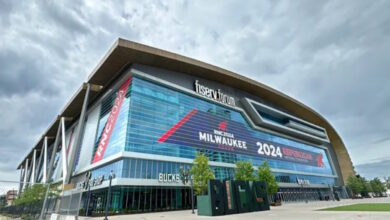The Iconic Golden Gate Bridge: A Masterpiece
The Golden Gate Bridge, an enduring symbol of San Francisco, stands as a remarkable testament to human ingenuity and architectural beauty. Spanning the majestic Golden Gate Strait, this iconic bridge has captured the hearts and imaginations of people around the world. In this article, we will delve into the fascinating history, remarkable engineering, and captivating design of the Golden Gate Bridge.
A Bridge to History
Construction of the Golden Gate Bridge began on January 5, 1933, during the height of the Great Depression. The project aimed to provide jobs for thousands of unemployed workers while also addressing the pressing need for a bridge connecting San Francisco to Marin County. Chief Engineer Joseph Strauss, along with Charles Alton Ellis and Leon Moisseiff, developed the original concept for the bridge, which was then refined and perfected by consulting engineers, most notably Irving Morrow and Charles Alton Ellis.
Stunning Design
One of the most captivating features of the Golden Gate Bridge is its Art Deco design, characterized by its sleek lines, sweeping arches, and International Orange color. Irving Morrow played a pivotal role in creating the bridge’s iconic aesthetics. The choice of International Orange was not only practical for visibility but also harmonized with the natural surroundings, especially the famous San Francisco fog. This unique color has become synonymous with the bridge itself.
The bridge’s two main towers, soaring to a height of 746 feet, were an engineering marvel of their time. The towers are linked by a graceful suspension system that supports the roadway. The span of the bridge reaches 4,200 feet, making it one of the longest suspension bridges in the world at the time of its completion.
Engineering Feat
The construction of the Golden Gate Bridge was a monumental engineering achievement. The challenging geography, strong tides, and violent winds at the Golden Gate Strait presented significant obstacles. To tackle these challenges, engineers employed groundbreaking techniques and materials.
The bridge’s massive towers were constructed using a method called cantilever construction, with the towers growing upwards and inwards simultaneously. The steel used in the bridge’s construction would stretch around the Earth at the equator nearly three times if laid end to end. During construction, safety measures were prioritized, and a safety net was installed under the bridge, saving the lives of 19 workers who became known as the “Halfway to Hell Club.”
Historical Significance
The Golden Gate Bridge opened to vehicular traffic on May 28, 1937, and quickly became an integral part of San Francisco’s identity. Its completion significantly reduced travel times and facilitated economic growth in the region. During World War II, the bridge served as a vital transportation link for military personnel and equipment, further cementing its importance.
Today, the Golden Gate Bridge is not only a critical transportation route but also a beloved tourist attraction. Millions of visitors come each year to marvel at its beauty, stroll across its walkways, and capture its stunning views of the city and the Pacific Ocean.
Conclusion
The Golden Gate Bridge is more than just a remarkable feat of engineering; it is a symbol of resilience, innovation, and the enduring spirit of San Francisco. Its design, color, and iconic status have made it a true masterpiece that continues to inspire awe and admiration. As we stand in the shadow of this magnificent bridge, we are reminded of the human capacity to overcome challenges and create lasting works of art that transcend generations.




